
loading

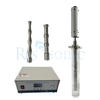

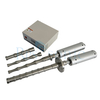

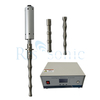

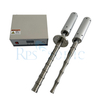

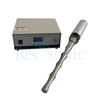

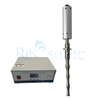
| Availability: | |
|---|---|
| Quantity: | |
RPS-SONO20
RPS-SONIC
| Place of Origin | China |
|---|---|
| Brand Name | RPS-SONIC |
| Model Number | RPS-S15-3000 |
| Minimum Order Quantity | 1set |
| Price | negotiation |
| Packaging Details | Foam And Wood Box |
| Delivery Time | 3days |
| Payment Terms | T/T, Western Union, MoneyGram |
| Supply Ability | 200 sets per month |
| Frequency | 15Khz | Power | 3000W |
|---|---|---|---|
| Weight | 20Kg | Horn | Titanium Alloy |
| Speed | <100L/HOUR | Generator | Digital |
| High Light | ultrasonic probe sonicator,ultrasonic homogenizer sonicator | ||
Description:
Ultrasonic Ballast Water Disinfection The ultrasonic treatment system has demonstrated to be effective in the killing of bacteria, plankton, and larger organisms. The ultrasonic disinfection of ballast water is a mechanical/ physical treatment, which avoids the dosing of any strong and expensive active chemicals into the ballast water. This ensures an ideal environmental acceptability combined with high biological effectiveness regarding the destruction and inactivation of plant and animal organisms and microorganisms in ballast water.
| Item | RPS-S500 | RPS-S1000 | RPS-S1500 | RPS-S2000 | RPS-S3000 |
| Working frequency | 20kHz | 20kHz | 20kHz | 20kHz | 15kHz |
| Max power | 500W | 1000W | 1500W | 2000W | 3000W |
| Handing capacity | 0.5 to 2L/min | 0.5 to 3L/min | 0.5 to 4L/min | 1.0 to 6L/min | 1.0 to 8L/min |
| Apply | Production line, be used in combination | ||||
| Reaction tank | 10L,15L,20L,35L,stainless steel | ||||
| Working pressure | Max:5MPa | ||||
| Working temperature | Max: 350°C | ||||
Background “If a vessel sails without cargo or partially loaded down, it will need ballast to keep its stability and safety. Water is often used as ballast, but, when it is collected in origin, a series of organisms can travel into the water, normally members of the plankton community which could be stranger in the destination (allochthonous), and they might cause unwanted biogological pollution. In order to avoid this possible pollution, we have to use a effective system to sterilize the ballast water.” [Mingorance Rodríguez: 2012, 163] Invasive aquatic species are one of the four greatest threats to the world’s oceans, and can cause extremely severe environmental, economic and public health impacts. To avoid the introduction of pest mollusks (zebra mussels, the Asian clam, and others), various treatments of ballast water sterilization (also referred to as disinfection or neutralization) can be applied. A common treatment is the chemical cleaning of ballast water. The chemicals used are environmentally harmful and expensive. With increasing legal regulations for ballast water management, alternative ballast water treatments – e.g. by ultrasonic disinfection – are integrated on board of marine vessels
Application
Physical disinfection has three options as well. Ultraviolet light can be used to break down cell membranes killing the organism or destroying its ability to reproduce. Effectiveness depends on ballast water turbidity (sediment concentration) as this could limit transmission. Cavitation/ultrasounds – venturi pipes or slit plates are used to generate cavitation bubbles. These high energy bubbles create hydrodynamic forces, ultrasonic oscillations, or high frequency noise, which kills organisms. Thirdly, de-oxygenation uses various methods to remove the dissolved oxygen in the ballast water and replace it with inactive gases, such as nitrogen or other inert gas. In addition to killing aerobic organisms this can help prevent corrosion if the oxygen content is maintained at the correct levels.
Ultrasonic Disinfection by Cavitation High power ultrasound waves generate cavitation bubbles in liquids, which result in intense shear forces and high stress. When intense ultrasound waves are coupled into liquids, the sound waves that propagate into the liquid media result in alternating high-pressure and low-pressure cycles, with rates depending on the frequency. During the low-pressure cycle (phase of rarefaction), high-intensity ultrasonic waves create small vacuum bubbles or voids in the liquid. When the bubbles attain a volume at which they can no longer absorb energy, they collapse violently during a high-pressure cycle (phase of compression). This phenomenon is termed cavitation. During the implosion very high temperatures (approx. 5,000K) and pressures (approx. 2,000atm) are reached locally. The implosion of the cavitation bubble also results in liquid jets of up to 280m/s velocity. This highly energetic bubble generation and collapse results in hydrodynamic shear forces and ultrasonic oscillations, which breaks and disrupts the cell walls of organisms – effectively killing them. Concerning its environmental acceptability, there are no known or anticipated environmental concerns associated with the ultrasound-assisted technology.
The other application of ultrasonic sonochemistry
• Dispersion
• Cell disruption
• Pharmacy sample prep
• Homogenization
• Emulsification
• Nanoparticle dispersion
• Atomization
• Graphene dispersion
• Biodiesel making;
• Liquidation,
• Crystallization,
• Extraction,
• Wastewater treatment,
• Accelerated reaction,
• kill microbes(cell disruption),
• Degradation of toxic organic pollutants
• antiscaling descaling in sewage treatment field
| Frequency | 15Khz | Power | 3000W |
|---|---|---|---|
| Weight | 20Kg | Horn | Titanium Alloy |
| Speed | <100L/HOUR | Generator | Digital |
| High Light | ultrasonic probe sonicator,ultrasonic homogenizer sonicator | ||
Description:
Ultrasonic Ballast Water Disinfection The ultrasonic treatment system has demonstrated to be effective in the killing of bacteria, plankton, and larger organisms. The ultrasonic disinfection of ballast water is a mechanical/ physical treatment, which avoids the dosing of any strong and expensive active chemicals into the ballast water. This ensures an ideal environmental acceptability combined with high biological effectiveness regarding the destruction and inactivation of plant and animal organisms and microorganisms in ballast water.
| Item | RPS-S500 | RPS-S1000 | RPS-S1500 | RPS-S2000 | RPS-S3000 |
| Working frequency | 20kHz | 20kHz | 20kHz | 20kHz | 15kHz |
| Max power | 500W | 1000W | 1500W | 2000W | 3000W |
| Handing capacity | 0.5 to 2L/min | 0.5 to 3L/min | 0.5 to 4L/min | 1.0 to 6L/min | 1.0 to 8L/min |
| Apply | Production line, be used in combination | ||||
| Reaction tank | 10L,15L,20L,35L,stainless steel | ||||
| Working pressure | Max:5MPa | ||||
| Working temperature | Max: 350°C | ||||
Background “If a vessel sails without cargo or partially loaded down, it will need ballast to keep its stability and safety. Water is often used as ballast, but, when it is collected in origin, a series of organisms can travel into the water, normally members of the plankton community which could be stranger in the destination (allochthonous), and they might cause unwanted biogological pollution. In order to avoid this possible pollution, we have to use a effective system to sterilize the ballast water.” [Mingorance Rodríguez: 2012, 163] Invasive aquatic species are one of the four greatest threats to the world’s oceans, and can cause extremely severe environmental, economic and public health impacts. To avoid the introduction of pest mollusks (zebra mussels, the Asian clam, and others), various treatments of ballast water sterilization (also referred to as disinfection or neutralization) can be applied. A common treatment is the chemical cleaning of ballast water. The chemicals used are environmentally harmful and expensive. With increasing legal regulations for ballast water management, alternative ballast water treatments – e.g. by ultrasonic disinfection – are integrated on board of marine vessels
Application
Physical disinfection has three options as well. Ultraviolet light can be used to break down cell membranes killing the organism or destroying its ability to reproduce. Effectiveness depends on ballast water turbidity (sediment concentration) as this could limit transmission. Cavitation/ultrasounds – venturi pipes or slit plates are used to generate cavitation bubbles. These high energy bubbles create hydrodynamic forces, ultrasonic oscillations, or high frequency noise, which kills organisms. Thirdly, de-oxygenation uses various methods to remove the dissolved oxygen in the ballast water and replace it with inactive gases, such as nitrogen or other inert gas. In addition to killing aerobic organisms this can help prevent corrosion if the oxygen content is maintained at the correct levels.
Ultrasonic Disinfection by Cavitation High power ultrasound waves generate cavitation bubbles in liquids, which result in intense shear forces and high stress. When intense ultrasound waves are coupled into liquids, the sound waves that propagate into the liquid media result in alternating high-pressure and low-pressure cycles, with rates depending on the frequency. During the low-pressure cycle (phase of rarefaction), high-intensity ultrasonic waves create small vacuum bubbles or voids in the liquid. When the bubbles attain a volume at which they can no longer absorb energy, they collapse violently during a high-pressure cycle (phase of compression). This phenomenon is termed cavitation. During the implosion very high temperatures (approx. 5,000K) and pressures (approx. 2,000atm) are reached locally. The implosion of the cavitation bubble also results in liquid jets of up to 280m/s velocity. This highly energetic bubble generation and collapse results in hydrodynamic shear forces and ultrasonic oscillations, which breaks and disrupts the cell walls of organisms – effectively killing them. Concerning its environmental acceptability, there are no known or anticipated environmental concerns associated with the ultrasound-assisted technology.
The other application of ultrasonic sonochemistry
• Dispersion
• Cell disruption
• Pharmacy sample prep
• Homogenization
• Emulsification
• Nanoparticle dispersion
• Atomization
• Graphene dispersion
• Biodiesel making;
• Liquidation,
• Crystallization,
• Extraction,
• Wastewater treatment,
• Accelerated reaction,
• kill microbes(cell disruption),
• Degradation of toxic organic pollutants
• antiscaling descaling in sewage treatment field








Ultrasonic Welding Equipment Ultrasonic Welding Transducer Ultrasonic Welding Converter Ultrasonic Liquid Processor Ultrasonic Cutting Equipment Ultrasonic Spray Nozzles Ultrasonic Power Supply Ultrasonic Soldering Equipment Ultrasonic Welding Horn Ultrasonic Assisted Machining Ultrasonic Testing Equipment